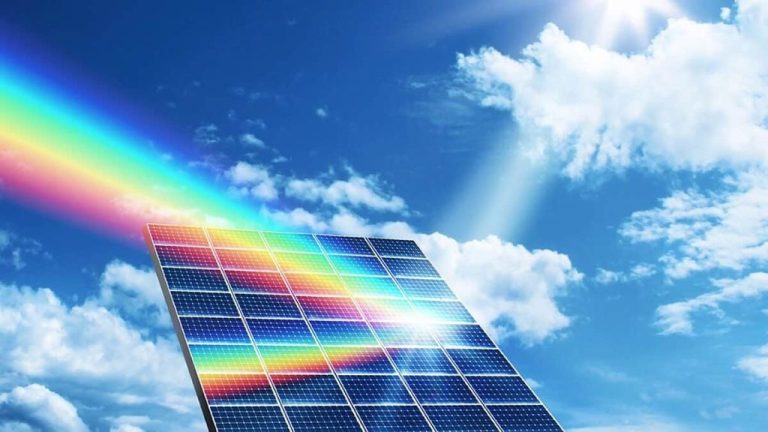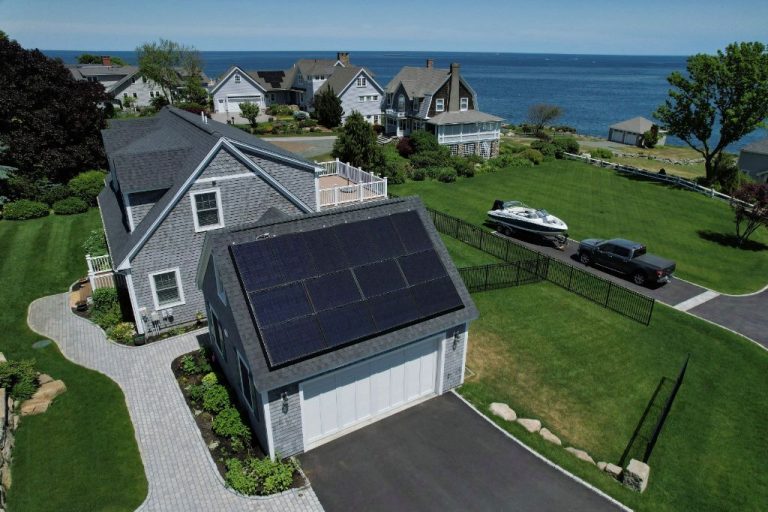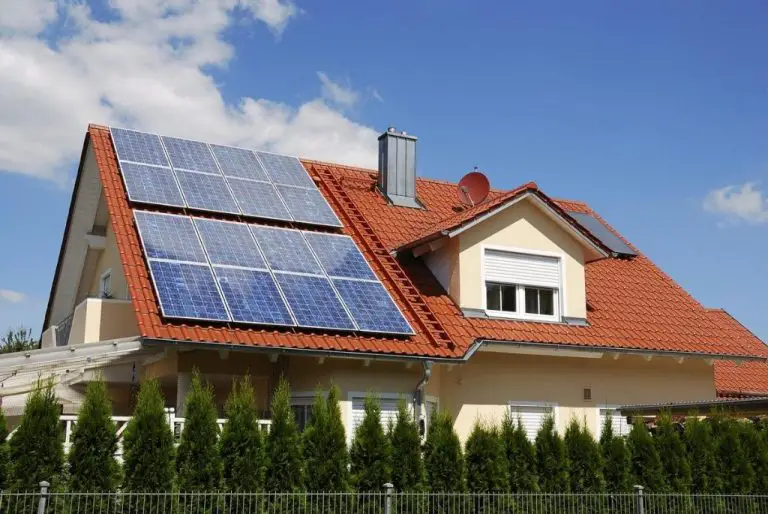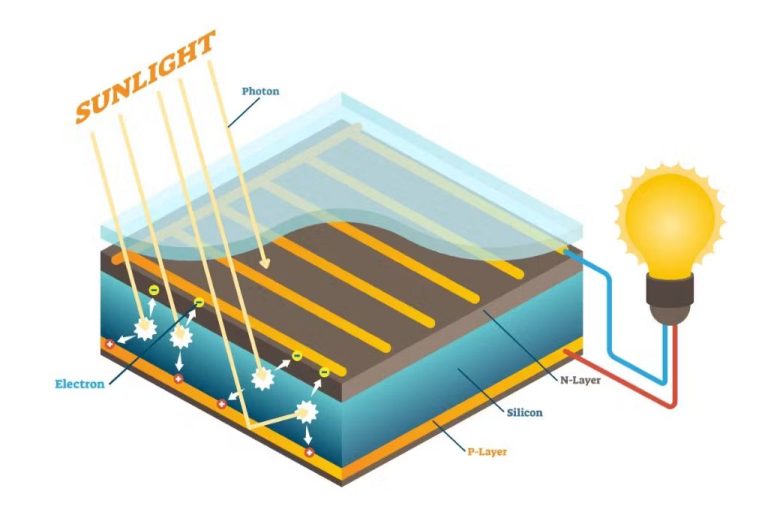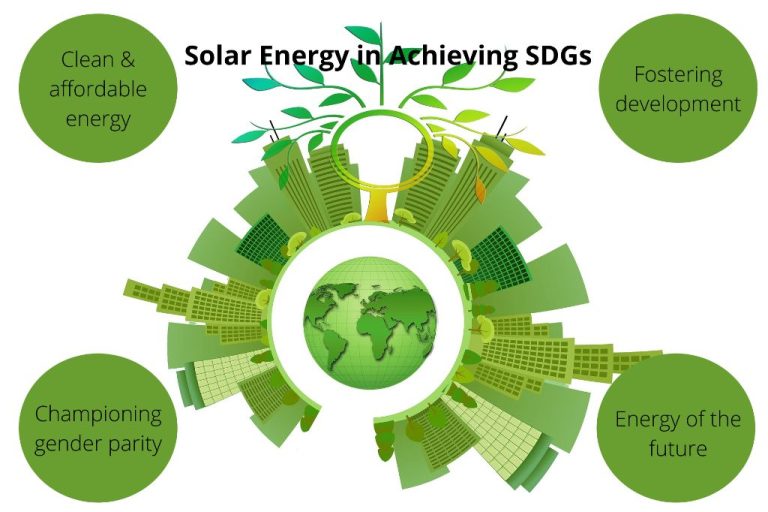What Are Potential Risks To Earth From Solar Activity?
Solar activity refers to events and emissions originating from the Sun, including solar flares, coronal mass ejections, and solar energetic particles. These events can release massive amounts of energy and charged particles that can have effects on Earth. Though the Sun lies an average of 93 million miles away from Earth, its activity poses various risks to our planet due to the Sun’s influence over Earth’s magnetic field, atmosphere, technology systems, and more. Understanding solar activity and its potential impacts is crucial to improving space weather prediction capabilities and protecting vulnerable infrastructure on Earth.
Sources:
https://www.almanac.com/what-are-solar-cycles-and-how-do-they-affect-weather
https://earth.org/sun-entering-a-new-cycle-what-does-this-mean/
Solar Flares
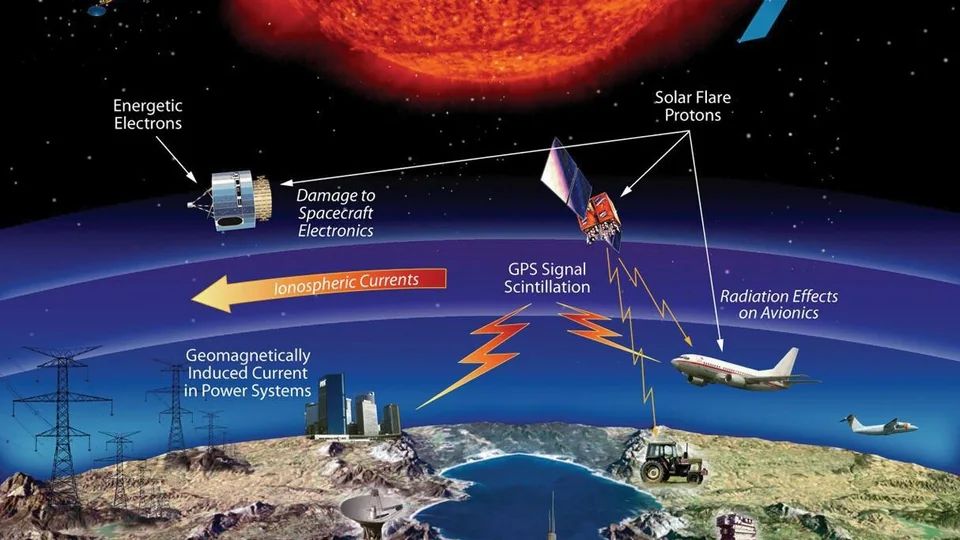
Solar flares are sudden flashes of brightness that occur on the Sun. They are caused by a release of magnetic energy associated with sunspots, which are areas with strong magnetic fields. Solar flares are classified according to their brightness in the x-ray part of the electromagnetic spectrum. The largest flares are known as X-Class flares and can release as much energy as a billion megatons of TNT.
Solar flares are often accompanied by coronal mass ejections (CMEs), which are massive bursts of solar wind and magnetic fields that are ejected into space. The magnetic fields and particles associated with CMEs can impact the Earth’s own magnetic field.[1]
[1] https://www.jpl.nasa.gov/nmp/st5/SCIENCE/effects2.html
Coronal Mass Ejections
Coronal mass ejections (CMEs) are huge bubbles of hot plasma and magnetic fields that are ejected from the sun’s corona or outer atmosphere. They are vastly larger than solar flares, containing billions of tons of matter accelerated to millions of miles per hour. While solar flares are an explosion of energy, CMEs are an enormous eruption of solar material and magnetic fields.
The difference between CMEs and solar flares is that solar flares are brief bursts of radiation, while CMEs are massive clouds of solar material and magnetic fields being shot into space. CMEs can trigger intense geomagnetic storms when they collide with Earth’s magnetic field, whereas solar flares themselves do not impact Earth’s magnetosphere directly. The intense radiation bursts from solar flares can affect communications and electronics systems, but CMEs have the potential to damage satellites, disrupt power grids, and endanger astronauts through their shockwaves and geomagnetic storms.
CMEs can happen independently of or in conjunction with solar flares. But when a very powerful flare occurs, it often leads to an associated CME.
Geomagnetic Storms
Geomagnetic storms are major disturbances in Earth’s magnetosphere caused by solar wind shock waves and clouds of magnetic field that interact with Earth’s magnetic field. They are the result of changes in the solar wind that produces major changes in the currents, plasmas, and fields in Earth’s magnetosphere.
Solar flares and coronal mass ejections on the sun create shock waves and clouds of magnetized particles that can interact with Earth’s magnetic field lines when they arrive at Earth. The interaction causes electromagnetic induction and electric currents in Earth’s long conducting lines such as power lines, radio waveguides, and Earth itself. The effects on the magnetosphere are extensive.[1]
The storms create bright auroras, disrupt radio communication, expose satellites to energetic particles, degrade or destroy spacecraft electronics, corrode pipelines, affect high frequency radio communications and navigation systems, and induce large currents in electric power grids.
The largest recorded geomagnetic storm, known as the Carrington Event in 1859, produced auroras visible as far south as the Caribbean; telegraph systems worldwide went haywire and in some cases shocked operators; widespread telephone and telegraph disruptions occurred, and aurora-induced fires destroyed some telegraph offices.[2]
In March 1989, a severe geomagnetic storm caused the collapse of the Hydro-Québec power grid in Canada, leaving millions without power for up to 9 hours.[3]
Impacts on Power Grids
Solar storms and increased solar activity can have major impacts on electrical grids, potentially causing widespread blackouts. According to EarthSky, when strong geomagnetic storms hit Earth, the increase in solar activity causes the atmosphere to expand outward which changes the way radio waves travel through the ionosphere (https://earthsky.org/sun/solar-storms-affect-on-power-grid-internet/). This disruption can impact the electric grid in several ways.
One concern is damage to high-voltage transformers. The changes in the ionosphere can induce electric currents on the ground that could potentially overload transformers and transmission lines, causing them to fail or be permanently damaged. Replacing these transformers is expensive and time-consuming.
Another issue is voltage instability and collapse. The abnormal electric currents and geomagnetic activity can cause fluctuations in the grid that lead to imbalances and instability in the power system. This could potentially result in a cascading voltage collapse and widespread blackout.
There are also concerns about reactive power loss and frequency fluctuations. The induced currents can reduce the amount of reactive power available in the system, which is needed to stabilize voltage and maintain the alternating current (AC) frequency of the grid. Major fluctuations in frequency can cause further issues and failures.
According to Forbes, a powerful geomagnetic storm could overwhelm high-voltage transformers with induced currents and voltages too powerful to protect against (https://www.forbes.com/sites/bernardmarr/2022/02/09/why-solar-storms-could-be-the-biggest-risks-to-technology/). This highlights the risks that space weather poses to critical infrastructure like power grids. Hardening the grid with blockers, improved forecasting, and backups may help mitigate the impacts.
Impacts on Satellites
Solar activity can have significant impacts on satellites orbiting the Earth. One of the main risks is damage and disruption caused by increased radiation from solar flares and coronal mass ejections (CMEs) during solar storms. According to the Encyclopedia Britannica video overview, solar flares can affect satellites directly, with some being damaged or knocked out of action during strong solar flares (1). The charged particles emitted during flares can penetrate and disrupt electronic components, leading to glitches or failure. This is a particular concern for telecommunication and GPS satellites.
A study on the impact of solar activity on low Earth orbit satellites found that geomagnetic disturbances resulting from increased solar activity strongly influence the upper atmosphere where many satellites operate (2). The increased atmospheric drag and density fluctuations during geomagnetic storms can perturb satellite orbits. Satellites at low altitudes are especially vulnerable. The resulting orbital decay can potentially shorten a satellite’s lifespan if it exhausts its fuel reserves compensating.
Protecting satellites from radiation generally requires robust shielding and radiation-hardened components, adding to launch costs. Operators may also orient satellites to minimize exposure or shut down nonessential systems during intense solar activity. However, total protection is difficult and solar storms remain a substantial threat to satellites.
Impacts on Astronauts
Solar flares and the radiation they produce can pose significant risks to astronauts in space. According to research from NASA, the high-energy radiation from solar flares can penetrate through spacecraft and spacesuits, exposing astronauts to increased levels of radiation. This radiation exposure can increase astronauts’ lifetime risk of cancer and also cause acute radiation sickness during solar storms (https://phys.org/news/2012-01-solar-flares-astronauts.html). The energetic particles from flares can damage DNA, leading to increased risk of cataracts and other diseases over time. A major solar storm could deliver a lethal radiation dose to astronauts if they are not adequately shielded. NASA and other space agencies carefully monitor space weather and solar activity to provide warnings that allow astronauts to take shelter during severe events. Developing improved shielding technologies for spacecraft and suits is an active area of research aimed at better protecting future space explorers.
Impacts on Aviation
Strong solar activity can disrupt aviation communications, especially at high latitudes. Solar flares release bursts of radiation that can degrade or block high-frequency radio communications, which are critical for air traffic control operations. Pilots routinely communicate with air traffic controllers via HF radio above 50 degrees latitude, where line-of-sight VHF radio coverage is limited. During intense solar storms, HF radio blackouts have occurred over the North Pole routes, potentially cutting off communications in those areas (Source).
In addition to degrading HF radio, solar storms can disrupt satellite navigation signals from the Global Positioning System (GPS). Many modern aircraft rely on GPS signals for navigation, so interference during solar events poses a safety risk. Geomagnetic storms have been known to cause GPS errors as large as 100 meters. There are also concerns about increased radiation exposure for pilots and flight crews flying at high altitudes and latitudes during solar storms (Source).
Preparing for Solar Storms
Despite the potential threats, there are ways we can prepare for increased solar activity. According to this article, advancements in technology and AI may help us better predict when solar storms will occur. Improved space weather forecasting will give more warning to take protective actions.
Hardening the electric grid against geomagnetically induced currents is another protective measure. This involves installing blocking devices and capacitors to reduce grid vulnerability. Satellites and other critical systems can also be designed to better withstand radiation damage from solar storms.
For astronauts, protective sheltering within spacecraft and habitats can reduce radiation exposure. Air travel can be rerouted and adjusted during periods of high solar activity. The goal is increasing resilience and being prepared to respond quickly when space weather alerts are issued.
Conclusion
Solar storms originating from increased activity on the Sun can pose significant risks to critical infrastructure on Earth. The main risks come from solar flares, coronal mass ejections, and the resulting geomagnetic storms. These can impact power grids, disabling transformers and causing widespread blackouts. Satellites can be damaged or experience glitches from electromagnetic radiation. Astronauts face increased radiation exposure during solar storms. Aviation communications and navigation systems can be disrupted. While rare, extreme solar storms could have devastating impacts.
Monitoring space weather and developing mitigation strategies is crucial. Hardening power grids, satellites, and other systems will help minimize the impacts of solar storms. Improving forecasting abilities allows for protective measures when space weather threats are identified. With advanced warning, steps can be taken such as powering down transformers to avoid permanent damage and rerouting air traffic. While solar storms present risks, through proper monitoring and preparedness, we can weather the storm.


